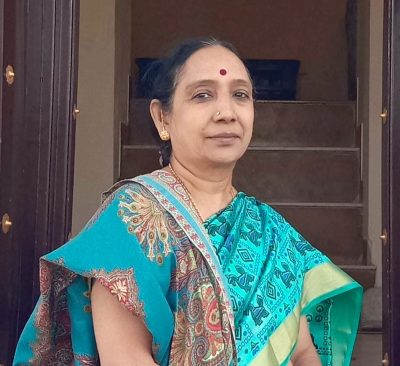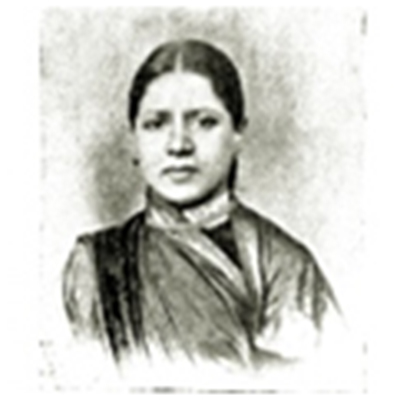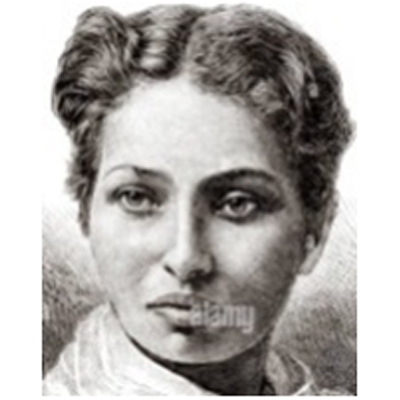
Breaking the Mould: Women’s Voices and Visions in Literature-2
(A Brief study of Indian women writers, contributed for the upliftment of women from social norms)
-Padmavathi Neelamraju
It is a continuation of my previous article my main focus is to highlight how these women writers met with these social norms, being victimised, yet rise as survivors, rose against them to keep up their own dignity. As writers, they voiced in favour of women. I briefly present the works of these iconic women writers who are the influencers of 19th century:
 | Krupabai Satthianadhan (1862-1894) Krupabai Satthianadhan was born on February 14, 1862 in Ahmednagar, Maharashtra, to Haripant Khisti and Radhabai who had left the Brahmin fold for Christianity. Brahmin-Christian Krupabai Satthianadhan is recognised as a pioneer woman author of Indian writing in English. |
She was hailed for her style as well as the content of her novels which showcased women’s struggles and inner lives in nineteenth-century India. After marrying Samuel, she embraced teaching career and established herself as a well known writer on social issues, especially those concerning women.
Saguna: A Story of Native Christian Life was the first autobiographical novel by Krupabai Satthianadhan, an account of the experience of conversion of a vivacious young woman from a Hindu to Christian in nineteenth-century India. Her novel received much appreciation in the 1880s and 1890s. Before her untimely death at the age of 31 (1894), she finished another novel, Kamala: A Story of Hindu Life (1894), which was published posthumously. Critics also pointed out that “even though characterised ‘Hindu’ and ‘Christian’, respectively, Kamala and Saguna are both girls who love books and find domesticity limiting.”
While reading these novels one could notice the intertwined criticism of Brahminical casteism and white racism in her Saguna—in the narration of the struggle of Saguna’s father to secure equal rights to access water from wells and ponds, braving the violence unleashed by Brahmins on the one hand, and Saguna’s own frustration against the racist behaviour of Christian missionary women against the ‘native’ women, her own mother, an ex-Brahmin woman. And in Kamala, the Hindu widow felt a personal and direct connection with God without changing herself to a different faith that would grant her that connection. Another contemporary writer Pandita Ramabai argued “In this case which, it was refused to the Hindu wife bound to servitude as a pativrata, one who serves her husband accepting him as her god.”
In brief we can see Krupabai Satthianadhan pioneered the cause of woman’s liberation to break the mould with her piercing empirical insights often eclipsed by the patriarchy of her times.
 | Pandita Ramabai(1858-1922) Pandita Ramabai had multifaceted contribution as an Indian feminist, a Diaspora writer in England, an insider to the Indian society yet an outsider because of her conversion to Christianity. She articulated her choices and constructed herself not only regarding her religious identity but also as a woman apart from the constraints female population had to face in the same period. Ramabai stood between two worlds, struggles to select the values and norms of several different and at least partially competing Indian and British communities. |
She gave a conceptual clarification of feminism, caste and gender norms in the nineteenth century colonial India, an overview of the Maharastrian society, the position of the High-caste Indian woman and her relationship with British women through her writings.
Anant Shastri Dongre, a renowned scholar and teacher himself and father of Ramabai, believed in women’s education and took many risks to teach his wife Lakshmi Bai to read. In turn, she took care with the education of her two daughters.
“My pilgrim life began when I was a little baby,” Ramabai writes in her autobiography. “When I was about eight years old my mother began to teach me and continued to do so until I was about fifteen years of age. During these years she succeeded in training my mind so that I might be able to carry on my education with very little aid from others.”
She created a sensation by giving lectures in Sanskrit and arguing with the shastris, or theologians who finally honoured her with the title Pandita, and spoken of as a modern-day incarnation of Saraswati, the goddess of learning.
‘The High-Caste Hindu Woman’ was written in 1887, was inflicted every stage of a high-caste woman’s life subjected to marginalisation, beginning with childhood, stating a woman’s place in religion and society. Pandita Ramabai was the outcome of a cross-cultural experience, and consequently she obtained many identities. Her experience as a high-caste Indian woman, a widow, a single mother, and a champion for women’s rights are of great value for learning about high caste Indian women. Moreover, because of her involvement with the cultures of both West and India, she presented a new interpretation of these two different worlds.
Ramabai, befitting her role as a “foremother and founder of modern Indian feminism”, she went on questioning the neo social norms which were against women’s betterment and were not seen in early vedic period but seen in Manu’s laws, which insisted that “women are never fit for independence.”
*****
(Next, to be continued with some more contemporary women writers of the West from the same period. See you again!)

Padmavathi Neelamraju is a retired teacher with more than 35 years of experience in teaching English, based in Chandigarh. She completed her education at Nagarjuna University, AP and CIEFL, Hyderabad, and went on to receive an MPhil in Indian Writings in English with a focus on Feminist literature. With an interest in Telugu and English literature, she pens her experiences through blogs and newspapers. Her writings often reflect her enthusiastic and experiential outlook towards life and society. She actively volunteers for the cause of education.
